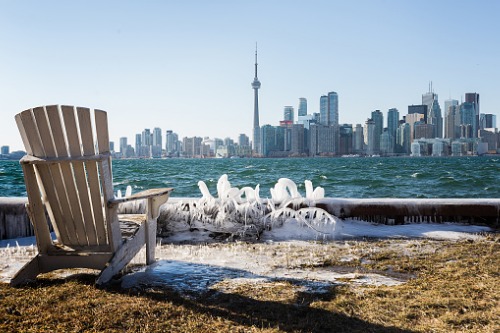

The wildfire and flooding seasons might be behind us as winter begins its assault on Canadians, with the Atlantic provinces getting hit by snow, rain and strong winds this week, but the lack of flames and floods doesn’t mean insured losses will subside to zero during the coming months.
“There have been winter losses and there have been losses from winter storms,” said Balz Grollimund, head of the treaty underwriting team for Canada at Swiss Re, though he added that losses haven’t been massive. “We haven’t had huge losses in the last decade or so. We had the Quebec ice storm [in 1998], which was very sizeable and created a lot of disruption at the time, but in recent years we haven’t had any really big winter storms.”
A list of the largest disasters in Canada by losses from the past few years does feature the 1998 ice storm, which also impacted Southern Ontario, though the Fort McMurray wildfire, Toronto’s experiences with flooding in 2013, and hailstorms in the Prairies have tended to be bigger events than classic winter storms. Winter-related damage to residential property is also already covered by most homeowners’ policies, unlike overland flooding.
“If you purchase regular homeowners’ insurance for personal lines, the winter perils – wind storms and ice storms – all should be covered,” said Grollimund.
Where winter can leave a longer lasting impact on insureds is when the season is coming to an end.
“When you have wet winters, so a lot of snowfall or a lot of rains into spring, this creates a flooding hazard depending on how quickly snow covers melt,” explained Grollimund. “This will also create more than average vegetation growth, so if you then have that followed by a very dry summer, going into later in the season you have a much more fuelled burn. So, heavy precipitation early in the year, depending on how temperatures and drought evolve over the summer, can create extra wildfire hazards going into the second part of the year.”
According to the Swiss Re report, “Natural catastrophes and man-made disasters in 2017: A year of record-breaking losses,” climate change has a hand in increasing catastrophe risks since it can lead to warmer winters and earlier springs, but it’s not the only factor to blame when considering rising insured losses from catastrophes in Canada.
“We are having more insured exposure in areas with more wildfire hazard, where we build more houses and more valuable homes close to or in forests,” said Grollimund, explaining that, overall, “we definitely see more frequency in terms of disasters – that’s looking at storms, that’s looking at rainfall that’s more intense, and it’s also in terms of drought periods that become more intense and more frequent.
“The other thing with climate change is that the higher temperatures tend to go into higher latitudes, so areas that previously wouldn’t see such long and prolonged extreme droughts, like the Boreal forest, are now much more exposed to wildfire hazard as well.”
